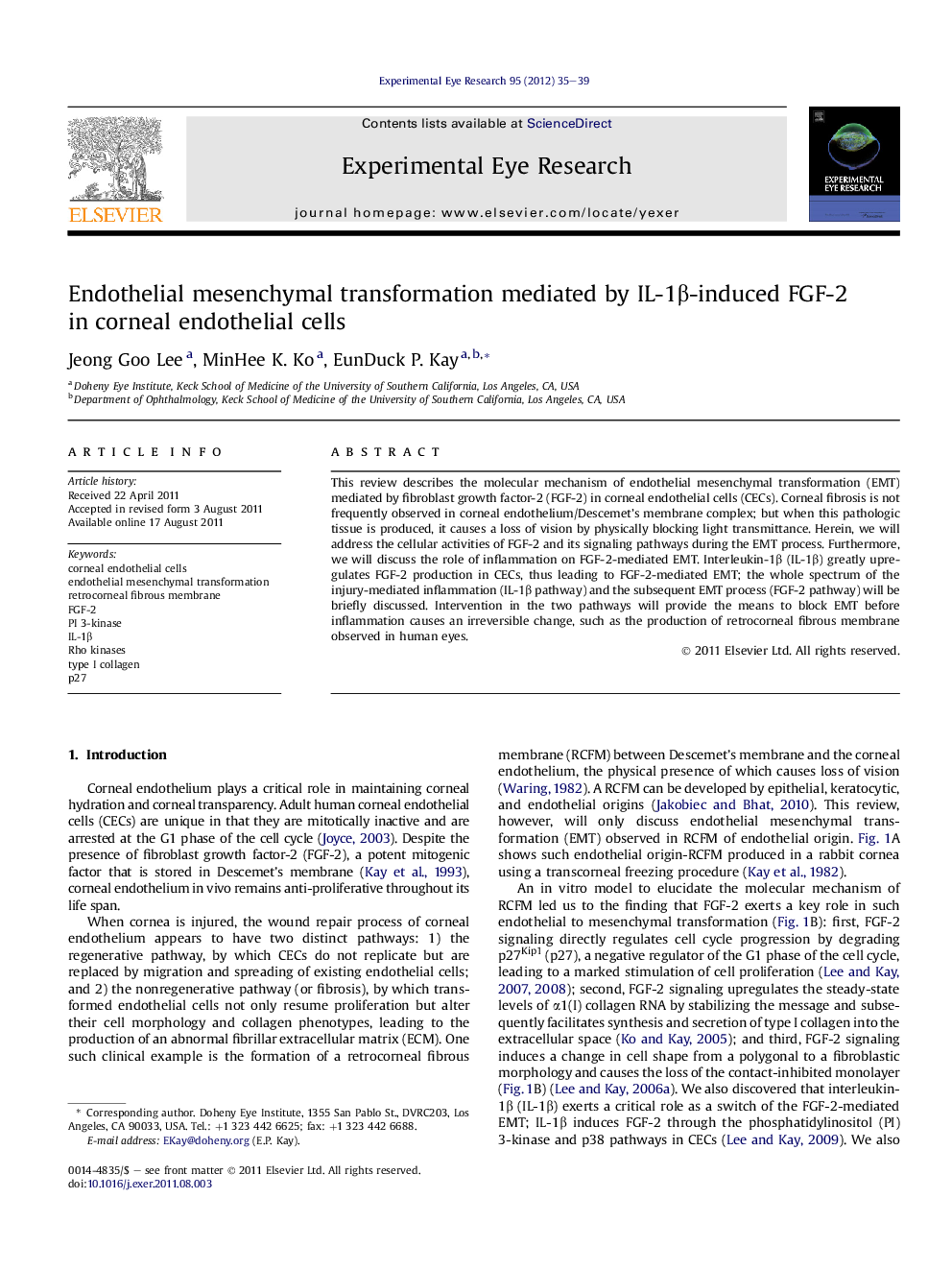| Article ID | Journal | Published Year | Pages | File Type |
|---|---|---|---|---|
| 4011440 | Experimental Eye Research | 2012 | 5 Pages |
This review describes the molecular mechanism of endothelial mesenchymal transformation (EMT) mediated by fibroblast growth factor-2 (FGF-2) in corneal endothelial cells (CECs). Corneal fibrosis is not frequently observed in corneal endothelium/Descemet’s membrane complex; but when this pathologic tissue is produced, it causes a loss of vision by physically blocking light transmittance. Herein, we will address the cellular activities of FGF-2 and its signaling pathways during the EMT process. Furthermore, we will discuss the role of inflammation on FGF-2-mediated EMT. Interleukin-1β (IL-1β) greatly upregulates FGF-2 production in CECs, thus leading to FGF-2-mediated EMT; the whole spectrum of the injury-mediated inflammation (IL-1β pathway) and the subsequent EMT process (FGF-2 pathway) will be briefly discussed. Intervention in the two pathways will provide the means to block EMT before inflammation causes an irreversible change, such as the production of retrocorneal fibrous membrane observed in human eyes.
► FGF-2 is the direct mediator of endothelial mesenchymal transformation in CECs. ► FGF-2 involves in mito-, morphogenic pathway, and gene regulation of type I collagen. ► IL-1β upregulates FGF-2 production via PI 3-kinase/p38/NF-κB pathways in CECs. ► IL-1β released by inflammatory cells upregulates FGF-2 via PI 3-kinase/p38/NF-κB.
